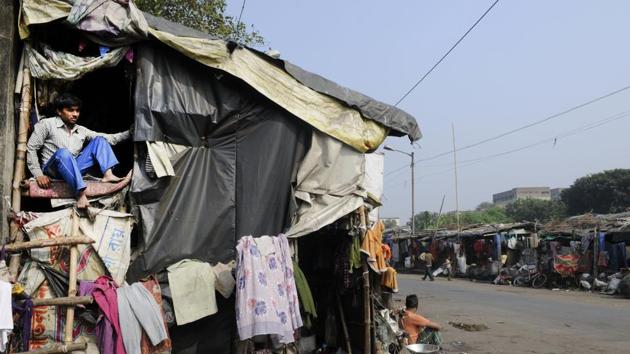Luxury apartments are springing up in urban areas. But, where do the poor go?
For the first time in history, the majority of the world population lives in urban areas and the urban population is growing at a higher rate than the rural population. Even as luxury housing and apartments mushroom in Kolkata, the weaker and more vulnerable sections have to huddle under bridges or camp out on pavements
On February 9, 2017, on its front page, a leading Kolkata newspaper carried the following notice from the Department of Urban Development and Municipal Affairs, Government of West Bengal: “Agnibina at Asansol/ Dumurjala at Howrah/ Teesta at Siliguri/ Samriddhi at Kalyani/ Uttam at Baruipur Turn 330 acres of Government land, ready for development, into a whole new city Siliguri (84.41 acres)/ Asansol (59.27 acres)/ Kalyani (50.7 acres)/ Howrah (50 acres)/ Baruipur (86.2 acres). Bengal is on the go. And it’s growing from strength to strength. Today with a $140 billion GDP it ranks third among the states in India. It is a time when the thought leader of yesterday is turning concepts into reality. It is a time when growth is in overdrive. Welcome to a new Bengal. Welcome to the land of opportunities…Bengal beckons. Build the future.”

Another newspaper front page announced apartments starting at Rs. 22 lakhs in high-rises. There have been constant advertisements regarding high-rise apartment blocks and luxury homes particularly in the last ten years.
The question arises, do we only need these or should there be urban development for the lower income group alongside?
Driving home in New Alipore, one can see the back fringes of the Durgapur colony which still looks like a ‘basti’. Dilapidated KMC housing quarters jostle with tenements among dirty, crowded surroundings. In Kolkata, the rich and the poor have traditionally lived alongside each other, as seen on Burdwan Road and D L Khan Road. The onslaught of current gentrification has led to the slums on D L Khan Road being hidden from view by walls. Similarly, gentrified shop frontages and restaurants have emerged at the road level in the former East Bengali refugee colonies of Durgapur and Sahapur in New Alipore. Where are the poorest of the poor to go?
For the first time in history, the majority of the world population lives in urban areas and the urban population is growing at a higher rate than the rural population. Cities of the developing world now account for 90% of the world urban growth, according to UN-Habitat 2006. About 5.2 billion people or 80% of the world urban dwellers will live in the developing world by 2050, write Aldrich and Sandhu in their book Housing for the Urban Poor, published in 2015.
Urban expert Arpan De Sarkar wrote in 2015 that since “urbanisation has been taking place at a brisk rate, insufficient basic services alongside scarce urban space are common disorders. It is obvious that the provision of adequate urban housing with basic services is very crucial in ensuring the wellbeing of expanding urban areas…(The) Technical Group (Kundu Committee) on Urban Housing Shortage…(2012-17) estimated the housing shortage as 18.78 million units in 2012, out of which 56.18 % is in the economically weaker segments (EWS) and 39.44 % is in the lower income group (LIG) categories…India can definitely offer smart housing to its urban citizens by learning from its peers.”
As far as affordable housing is concerned, the Technical Group estimated that 73% of the shortage in self-occupied housing is in the bottom 40% of the urban households. The proportion of slum dwellers in large metropolitan areas is higher. During the seven years of implementation of the Basic Urban Services for the Poor (BUSP) component of the Jawaharlal Nehru National Urban Renewal Mission (JNNURM), only about 1.6 million units have been sanctioned. There is a need for collaborative efforts between the government and private parties, according to the Twelfth Five Year Plan (2012-17).
Of late, the concept of smart cities and smart housing has gained widespread attention. Sustainable urban environments are crucial. How much longer do the weaker and more vulnerable sections have to huddle under bridges or camp out on pavements?
Aditi Chatterji is Honorary Associate, Centre for Urban Economic Studies, University of Calcutta
The views expressed are personal





